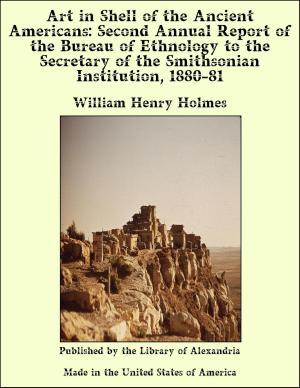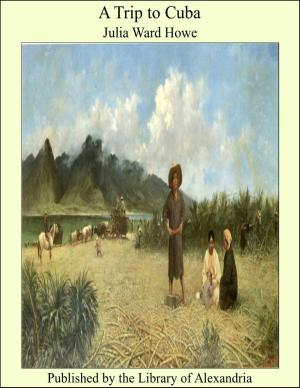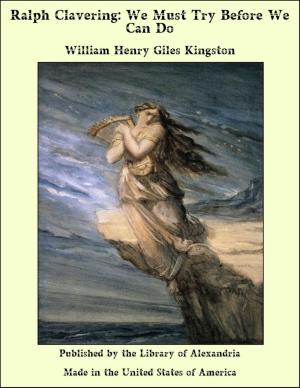The Jenolan Caves: An Excursion in Australian Wonderland
Nonfiction, Religion & Spirituality, New Age, History, Fiction & Literature| Author: | Samuel Cook | ISBN: | 9781465610294 |
| Publisher: | Library of Alexandria | Publication: | March 8, 2015 |
| Imprint: | Language: | English |
| Author: | Samuel Cook |
| ISBN: | 9781465610294 |
| Publisher: | Library of Alexandria |
| Publication: | March 8, 2015 |
| Imprint: | |
| Language: | English |
The first of these caves was discovered in 1841 by James Whalan, who lived on the Fish River, near what is now the Tarana Railway Station. Having been robbed by a man named McEwan, he accompanied a police officer in search of the desperado, and tracked him to the romantic spot which forms the centre of the cave reserve, where he was captured. It is possible that some of these caves were known previously to outlaws, who found in them a secure and convenient hiding-place when hotly pursued. But the visit of Whalan on the occasion of the capture of McEwan first brought them into public notice. The name of the bush-ranger is given to the creek which plays an important part in connection with the caves. One of the principal features received its name from the captor, and another—the Bow Cave—is called after some stolen bullock-bows found therein. They were then known as the "Fish River Caves," or as the "Binda Caves." They were called the Fish River Caves because they were in what was then regarded as the "Fish River District," and not very far from the Fish River post-office. They were called the "Binda Caves" after a station about nine miles distant to the northward. And so they were indifferently known until the month of August, 1884, when their designation was officially changed to "Jenolan"—that being the name given by Sir Thomas Mitchell (Surveyor-General of New South Wales) to the mountain from which is named the parish within which the caves are situated. The change of nomenclature was recommended on the ground that the then existing names were infelicitous and misleading,—the caves being not upon the Fish River, but upon a different watershed, separated from it by the main dividing range of the colony. The time was considered appropriate for remedying the mistake, because a map of the parish of Jenolan was then in course of preparation, and would shortly be lithographed and issued to the public. The official correspondence on this subject discloses the fact that "Binda" was first thought of as a good official name, and then "Bindo;" but the former was found to be the name of a post town between Yass and Goulburn, and the latter the name of a village and a mountain nine miles north of the caves, and, like the Fish River, on the west side of the dividing range.
The first of these caves was discovered in 1841 by James Whalan, who lived on the Fish River, near what is now the Tarana Railway Station. Having been robbed by a man named McEwan, he accompanied a police officer in search of the desperado, and tracked him to the romantic spot which forms the centre of the cave reserve, where he was captured. It is possible that some of these caves were known previously to outlaws, who found in them a secure and convenient hiding-place when hotly pursued. But the visit of Whalan on the occasion of the capture of McEwan first brought them into public notice. The name of the bush-ranger is given to the creek which plays an important part in connection with the caves. One of the principal features received its name from the captor, and another—the Bow Cave—is called after some stolen bullock-bows found therein. They were then known as the "Fish River Caves," or as the "Binda Caves." They were called the Fish River Caves because they were in what was then regarded as the "Fish River District," and not very far from the Fish River post-office. They were called the "Binda Caves" after a station about nine miles distant to the northward. And so they were indifferently known until the month of August, 1884, when their designation was officially changed to "Jenolan"—that being the name given by Sir Thomas Mitchell (Surveyor-General of New South Wales) to the mountain from which is named the parish within which the caves are situated. The change of nomenclature was recommended on the ground that the then existing names were infelicitous and misleading,—the caves being not upon the Fish River, but upon a different watershed, separated from it by the main dividing range of the colony. The time was considered appropriate for remedying the mistake, because a map of the parish of Jenolan was then in course of preparation, and would shortly be lithographed and issued to the public. The official correspondence on this subject discloses the fact that "Binda" was first thought of as a good official name, and then "Bindo;" but the former was found to be the name of a post town between Yass and Goulburn, and the latter the name of a village and a mountain nine miles north of the caves, and, like the Fish River, on the west side of the dividing range.















